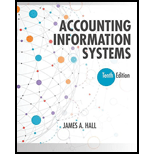
CMA-ADAPTED PERFORMANCE MEASURES
The Star Paper Division of Royal Industries is located near Los Angeles. A major expansion of the division’s only plant was completed in April 2015. The expansion consisted of an addition to the existing building, additions to the production line machinery, and the replacement of obsolete and fully depreciated equipment that was no longer efficient or cost-effective.
On May 1, 2015, George Harris became manager of Star. Harris had a meeting with Marie Fortner, vice president of operations for Royal, who explained to Harris that the company measured the performance of divisions and division managers on the basis of return on gross assets (ROA). When Harris asked if other measures were used in conjunction with ROA, Fortner replied, “Royal’s top management prefers to use a single performance measure. Star should do well this year now that it has expanded and replaced all of that old equipment. You should have no problem exceeding the division’s historical rate. I’ll check with you at the end of each quarter to see how you are doing.” Fortner called Harris after the first quarter results were completed because Star’s ROA was considerably below the historical rate for the division. Harris told Fortner that he did not believe that ROA was a valid performance measure for Star. Fortner indicated that she would discuss this with others at headquarters and get back to Harris. However, there was no further discussion of the use of ROA but only reports on divisional performance at the end of the second and third quarters. Now that the fiscal year has ended, Harris has received the memorandum in the figure designated for Problem 14.
PROBLEM 14: PERFORMANCE MEASURES
TO: George Harris, Star Paper Division
FROM: Marie Fortner, Royal Industries
SUBJECT: Divisional Performance
The operating results for the fourth quarter and for our fiscal year ended on April 30 are now complete. Your fourth quarter return on gross assets was only 9 percent, resulting in a return for the year of slightly under 11 percent. I recall discussing your low return after the first quarter and reminding you after the second and third quarters that this level of return is not considered adequate for the Star Paper Division. The return on gross assets at Star has ranged from 15 to 18 percent for the past five years. An 11 percent return may be acceptable at some of Royal’s other divisions, but not at a proven winner like Star, especially in light of your recently improved facility. Please arrange to meet with me in the near future to discuss ways to restore Star’s return on gross assets to its former level.
Harris is looking forward to meeting with Fortner as he plans to pursue the discussion about the appropriateness of ROA as a performance measure for Star. While the ROA for Star is below historical levels, the division’s profits for the year are higher than at any previous time. Harris is going to recommend that ROA be replaced with multiple criteria for evaluating performance—namely, dollar profit, receivable turnover, and inventory turnover.
Required
- a. Identify general criteria that should be used in selecting performance measures to evaluate operating managers.
- b. Describe the probable cause of the decline in the Star Paper Division’s return on gross assets during the fiscal year ended April 30, 2007.
- c. On the basis of the relationship between Fortner and Harris, as well as the memorandum from Fortner, discuss apparent weaknesses in the performance evaluation process at Royal Industries.
- d. Discuss whether the multiple performance evaluation criteria that Harris suggested would be appropriate for the evaluation of the Star Paper Division.
Trending nowThis is a popular solution!

Chapter 8 Solutions
Accounting Information Systems
 Accounting Information SystemsAccountingISBN:9781337619202Author:Hall, James A.Publisher:Cengage Learning,
Accounting Information SystemsAccountingISBN:9781337619202Author:Hall, James A.Publisher:Cengage Learning, Cornerstones of Cost Management (Cornerstones Ser...AccountingISBN:9781305970663Author:Don R. Hansen, Maryanne M. MowenPublisher:Cengage Learning
Cornerstones of Cost Management (Cornerstones Ser...AccountingISBN:9781305970663Author:Don R. Hansen, Maryanne M. MowenPublisher:Cengage Learning Managerial Accounting: The Cornerstone of Busines...AccountingISBN:9781337115773Author:Maryanne M. Mowen, Don R. Hansen, Dan L. HeitgerPublisher:Cengage Learning
Managerial Accounting: The Cornerstone of Busines...AccountingISBN:9781337115773Author:Maryanne M. Mowen, Don R. Hansen, Dan L. HeitgerPublisher:Cengage Learning Managerial AccountingAccountingISBN:9781337912020Author:Carl Warren, Ph.d. Cma William B. TaylerPublisher:South-Western College Pub
Managerial AccountingAccountingISBN:9781337912020Author:Carl Warren, Ph.d. Cma William B. TaylerPublisher:South-Western College Pub Financial And Managerial AccountingAccountingISBN:9781337902663Author:WARREN, Carl S.Publisher:Cengage Learning,
Financial And Managerial AccountingAccountingISBN:9781337902663Author:WARREN, Carl S.Publisher:Cengage Learning, Intermediate Accounting: Reporting And AnalysisAccountingISBN:9781337788281Author:James M. Wahlen, Jefferson P. Jones, Donald PagachPublisher:Cengage Learning
Intermediate Accounting: Reporting And AnalysisAccountingISBN:9781337788281Author:James M. Wahlen, Jefferson P. Jones, Donald PagachPublisher:Cengage Learning





